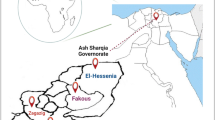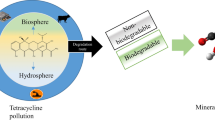Abstract
Water quality is a public health concern that calls for relevant biomonitoring programs. Molecular tools such as polymerase chain reaction (PCR) are progressively becoming more sensitive and more specific than conventional techniques to detect pathogens in environmental samples such as water and organisms. The zebra mussel (Dreissena polymorpha) has already been demonstrated to accumulate and concentrate various human waterborne pathogens. In this study, first, a spiking experiment to evaluate detection levels of Toxoplasma gondii DNA in zebra mussel organs using real-time PCR was conducted. Overall, lower DNA levels in the hemolymph, digestive gland, and remaining tissues (gonad and foot) were detected compared to mantle, muscle, and gills. Second, an in vivo experiment with 1000 T. gondii oocysts per mussel and per day for 21 consecutive days, followed by 14 days of depuration time in protozoa-free water was performed. T. gondii DNA was detected in all organs, but greatest concentrations were observed in hemolymph and mantle tissues compared to the others organs at the end of the depuration period. These results suggest that (i) the zebra mussel is a potential new tool for measuring T. gondii concentrations and (ii) real-time PCR is a suitable method for pathogen detection in complex matrices such as tissues.



Similar content being viewed by others
References
Aksoy U, Marangi M, Papini R, Ozkoc S, Bayram Delibas S, Giangaspero A (2014) Detection of Toxoplasma gondii and Cyclospora cayetanensis in Mytilus galloprovincialis from Izmir Province coast (Turkey) by real time PCR/high-resolution melting analysis (HRM). Food Microbiol 44:128–135
Allam B, Paillard C (1998) Defense factors in clam extrapallial fluids. Dis Aquat Org 33:123–128
Allam B, Carden WE, Ward JE, Ralph G, Winnicki S, Pales Espinosa E (2013) Early host-pathogen interactions in marine bivalves: evidence that the alveolate parasite Perkinsus marinus infects through the oyster mantle during rejection of pseudofeces. J Invertebr Pathol 113:26–34
Arkush KD, Miller MA, Leutenegger CM, Gardner IA, Packham AE, Heckeroth AR, Tenter AM, Barr BC, Conrad PA (2008) Molecular and bioassay-based detection of Toxoplasma gondii oocyst uptake by mussels (Mytilus galloprovincialis). Int J Parasitol 33:1087–1097
Aubert D, Villena I (2009) Detection of Toxoplasma gondii oocysts in water: proposition of a strategy and evaluation in Champagne-Ardenne Region, France. Mem Inst Oswaldo Cruz 104:290–295
Bar T, Kubista M, Tichopad A (2012) Validation of kinetics similarity in qPCR. Nucleic Acids Res 40:1395–1406
Botes M, de Kwaadsteniet M, Cloete TE (2013) Application of quantitative PCR for the detection of microorganisms in water. Anal Bioanal Chem 405:91–108
Bourgeault A, Gourlay-Francé C, Vincent-Hubert F, Palais F, Geffard A, Biagianti-Risbourg S et al (2010) Lessons from a transplantation of zebra mussels into a small urban river: an integrated ecotoxicological assessment. Environ Toxicol 25:468–478
Cheng TC (1981) Bivalves. In: Ratcliffe NA, Rowley AF (eds) Invertebrate blood cells, vol 1. Academic, New York, pp 233–300
Dubey JP (2004) Toxoplasmosis—a waterborne zoonosis. Vet Parasitol 126:57–72
Dumètre A, Aubert D, Puech P-H, Hohweyer J, Azas N, Villena I (2012) Interaction forces drive the environmental transmission of pathogenic protozoa. Appl Environ Microbiol 78:905–912
Esmerini PO, Gennari SM, Pena HF (2010) Analysis of marine bivalve shellfish from the fish market in Santos city, São Paulo state, Brazil, for Toxoplasma gondii. Vet Parasitol 170:8–13
Gallas-Lindemann C, Sotiriadou I, Plutzer J, Karanis P (2013) Prevalence and distribution of Cryptosporidium and Giardia in wastewater and the surface, drinking and ground waters in the Lower Rhine, Germany. Epidemiol Infect 141:9–21
Graczyk TK (2008) Assessment of waterborne parasites in Irish river basin districts—use of zebra mussels (Dreissena polymorpha) as bioindicators. Aquat Invasions 3:305–313
Graczyk TK, Fayer R, Cranfield MR, Conn DB (1997) In vitro interactions of Asian freshwater clam (Corbicula fluminea) hemocytes and Cryptosporidium parvum oocysts. Appl Environ Microbiol 63:2910–2912
Graczyk TK, Conn DB, Marcogliese DJ, Graczyk H, de Lafontaine Y (2003) Accumulation of human waterborne parasites by zebra mussels (Dreissena polymorpha) and Asian freshwater clams (Corbicula fluminea). Parasitol Res 89:107–112
Green HC, Field KG (2012) Sensitive detection of sample interference in environmental qPCR. Water Res 46:3251–3260
Hohweyer J, Dumètre A, Aubert A, Azas N, Villena I (2013) Tools and methods for detecting and characterizing Giardia, Cryptosporidium and Toxoplasma parasites in marine mollusks. J Food Prot 76:1649–1657
Jiang J, Alderisio KA, Singh A, Xiao L (2005) Development of procedures for direct extraction of Cryptosporidium DNA from water concentrates and for relief of PCR inhibitors. Appl Environ Microbiol 71:1135–1141
Jones JL, Dubey JP (2010) Waterborne toxoplasmosis—recent developments. Exp Parasitol 124:10–25
Lindsay DS, Phelps KK, Smith SA, Flick G, Sumner S, Dubey JP (2001) Removal of Toxoplasma gondii oocysts from sea water by eastern oysters (Crassostrea virginica). J Eukaryot Microbiol Suppl 48:197S-198S
Loge FJ, Thompson DE, Call DR (2002) PCR detection of specific pathogens in water: a risk-based analysis. Environ Sci Technol 36:2754–2759
Lucy FE, Graczyk TK, Tamang L, Miraflor A, Minchin D (2008) Biomonitoring of surface and coastal water for Cryptosporidium, Giardia, and human-virulent microsporidia using molluscan shellfish. Parasitol Res 103:1369–1375
Miller MA, Miller WA, Conrad PA, James ER, Melli AC, Leutenegger CM, Dabritz HA, Packham AE, Paradies D, Harris M, Ames J, Jessup DA, Worcester K, Grigg ME (2008) Type X Toxoplasma gondii in a wild mussel and terrestrial carnivores from coastal California: new linkages between terrestrial mammals, runoff and toxoplasmosis of sea otters. Int J Parasitol 38:1319–1328
Palos Ladeiro M, Bigot A, Aubert D, Hohweyer J, Favennec L, Villena I, Geffard A (2013) Protozoa interaction with aquatic invertebrate: interest for watercourses biomonitoring. Environ Sci Pollut Res 20:778–789
Palos Ladeiro M, Aubert D, Villena I, Geffard A, Bigot A (2014) Bioaccumulation of human waterborne protozoa by zebra mussel (Dreissena polymorpha): interest for water biomonitoring. Water Res 48:148–155
Reischl U, Bretagne S, Krüger D, Ernault P, Costa JM (2003) Comparison of two DNA targets for the diagnosis of Toxoplasmosis by real-time PCR using fluorescence resonance energy transfer hybridization probes. BMC Infect Dis 3:1–9
Roslev P, Bukh AS, Iversen L, Sønderbo H, Iversen N (2010) Application of mussels as biosamplers for characterization of faecal pollution in coastal recreational waters. Wat Sci Tech 62:586–593
Shapiro K, Largier J, Mazet JAK, Bernt W, Ell JR, Melli AC, Conrad PA (2009) Surface properties of Toxoplasma gondii oocysts and surrogate microspheres. Appli Environ Microbiol 75:1185–1191
Shapiro K, Mazet JAK, Schriewer A, Wuertz S, Fritz H, Miller WA, Largier J, Conrad PA (2010) Detection of Toxoplasma gondii oocysts and surrogate microspheres in water using ultrafiltration and capsule filtration. Water Res 44:893–903
Sidhu JPS, Hodgers L, Ahmed W, Chong MN, Toze S (2012) Prevalence of human pathogens and indicators in stormwater runoff in Brisbane, Australia. Water Res 46:6652–6660
Skotarczark B (2010) Progress in the molecular methods for the detection and genetic characterization of Cryptosporidium in water samples. Ann Agric Environ Med 17:1–8
Sotiriadou I, Karanis P (2008) Evaluation of loop-mediated isothermal amplification for detection of Toxoplasma gondii in water samples and comparative findings by polymerase chain reaction and immunofluorescence test (IFT). Diagn Microbiol Infect Dis 62:357–365
Tenter AM, Heckeroth AR, Weiss LM (2000) Toxoplasma gondii: from animals to humans. Int J Parasitol 30:1217–1258
Villalba A, Reece KS, Camino Ordás M, Casas SM, Figueras A (2004) Perkinsosis in molluscs: a review. Aquat Living Resour 17:411–432
Villena I, Aubert D, Gomis P, Ferté H, Inglard J, Denis-bisiaux H, Dondon J, Pisano E, Ortis N, Pinon J (2004) Evaluation of a strategy for Toxoplasma gondii oocyst detection in water. Appl Environ Microbiol 70:4035–4039
Willis JE, McClure JT, Davidson J, McClure C, Greenwood SJ (2013) Global occurrence of Cryptosporidium and Giardia in shellfish: should Canada take a closer look? Food Res Int 52:119–135
Yang S, Rothman RE (2004) Review PCR-based diagnostics for infectious diseases: uses, limitations, and future applications in acute-care settings. The Lancet 4:337–348
Zhang M, Yang Z, Wang S, Tao L, Xu LX, Yan RF, Song XK, Li XR (2014) Detection of Toxoplasma gondii in shellfish and fish in parts of China. Vet Parasitol 200:85–88
Acknowledgments
This Ph.D. work was supported by grants from the “Région Champagne-Ardenne” (projet INTERBIO). Financial support was provided by the CNRS-INSU (Programme EC2CO, projet IPAD) and the Programme Interdisciplinaire de Recherche sur l’Environnement de la Seine (PIREN-Seine). The authors thank Stéphanie La Carbona and Catherine Cazeaux, ACTALIA, Villers Bocage, France, for optimizing the real-time quantitative PCR procedure. We are grateful to Annie Buchwalter for the English revision.
Ethical considerations
In France, experiments conducted with Dreissena polymorpha do not require authorization. This specie is not protected and their use in scientific research does not require a specific permit. However, every effort will be made to reduce the suffering of animals.
Conflict of interest
The authors declare no competing conflict of interest.
Author information
Authors and Affiliations
Corresponding author
Additional information
Responsible editor: Markus Hecker
Rights and permissions
About this article
Cite this article
Palos Ladeiro, M., Bigot-Clivot, A., Aubert, D. et al. Assessment of Toxoplasma gondii levels in zebra mussel (Dreissena polymorpha) by real-time PCR: an organotropism study. Environ Sci Pollut Res 22, 13693–13701 (2015). https://doi.org/10.1007/s11356-015-4296-y
Received:
Accepted:
Published:
Issue Date:
DOI: https://doi.org/10.1007/s11356-015-4296-y




